What is Piles?
Fistula Treatment By Laser
Piles Treatment By Laser
Best Piles & Fistula Treatment in Jaipur
Haemorrhoids, commonly referred to as piles, are swollen blood vessels located in or around the anus and rectum. These veins, known as haemorrhoidal veins, are situated in the lowest part of the rectum and the anal region.
When these veins become swollen, the walls of the veins may stretch, thin out, and become irritated, especially during bowel movements. This condition can lead to discomfort, pain, and other symptoms often associated with piles.
If you are experiencing symptoms of haemorrhoids, it is essential to seek medical advice for proper diagnosis and treatment. Early intervention can help prevent complications and ensure effective relief.

Dr. Manish Rajput
Vascular and Interventional Radiologist
Laser Proctology Treatment In Jaipur

Dr. Buddhi Singh Dhakad
MBBS, MS, FMAS, FAIGES,
Laparoscopic & Laser Surgeon
Proctology Specialist

Dr. Prachita Agrawal
DMRE, FVIR, MBBS
Interventional Radiologist
What Are Piles?
Grades of Piles
- Grade I: Small inflammations inside the anal lining, not visible externally.
- Grade II: Larger than Grade I, may protrude during bowel movements but return on their own.
- Grade III: Known as prolapsed hemorrhoids; visible outside the anus but can be pushed back manually.
- Grade IV: Large prolapsed piles that cannot be reinserted and require medical treatment.
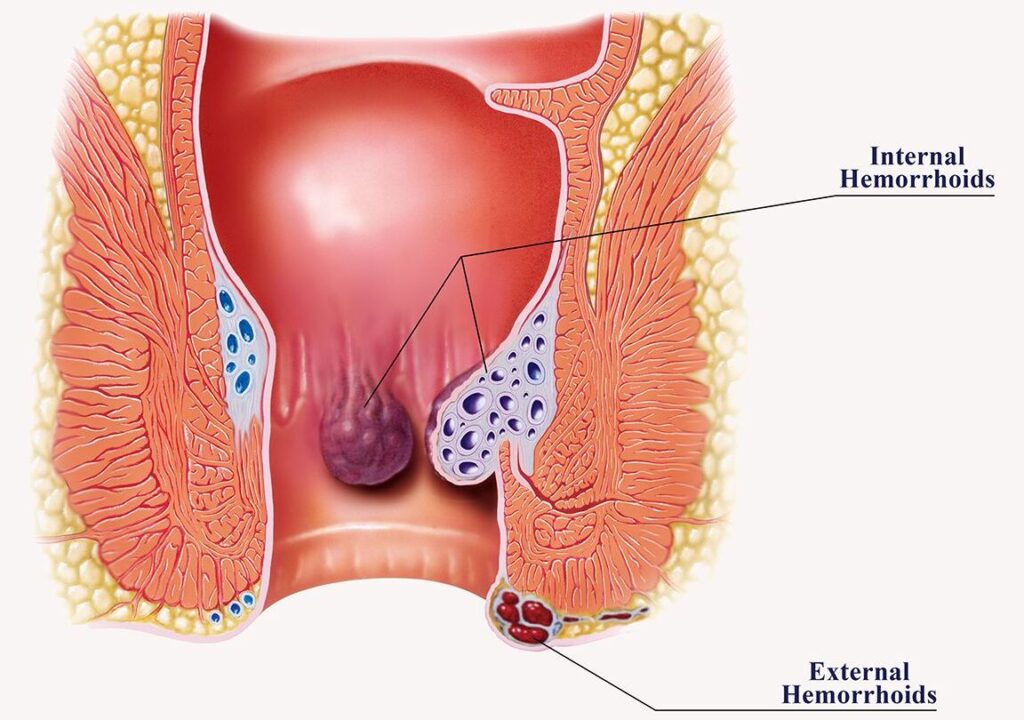
Symptoms of Piles
- Painful or hard lumps around the anus, sometimes containing coagulated blood (thrombosed piles)
- A sensation of incomplete bowel evacuation after passing stool
- Bright red blood visible during or after bowel movements
- Itching, redness, or soreness around the anus
- Pain during defecation
- Excessive anal bleeding causing anemia.
- Infection
- Fecal incontinence
- Anal fistula (a tunnel between the anal skin and the anus)
- Strangulated hemorrhoids (blood supply cut off)
Causes
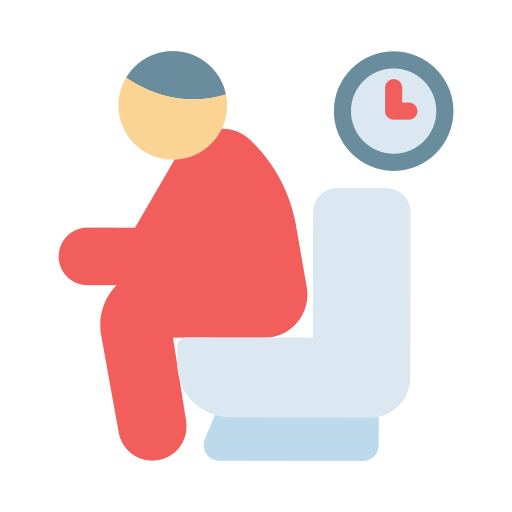
Chronic Constipation or Diarrhea
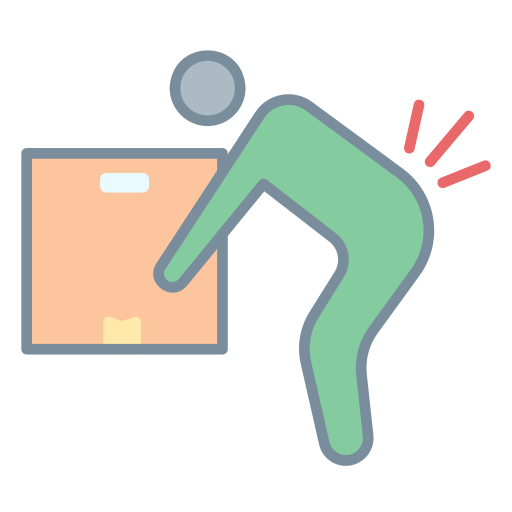
Lifting Heavy Weights
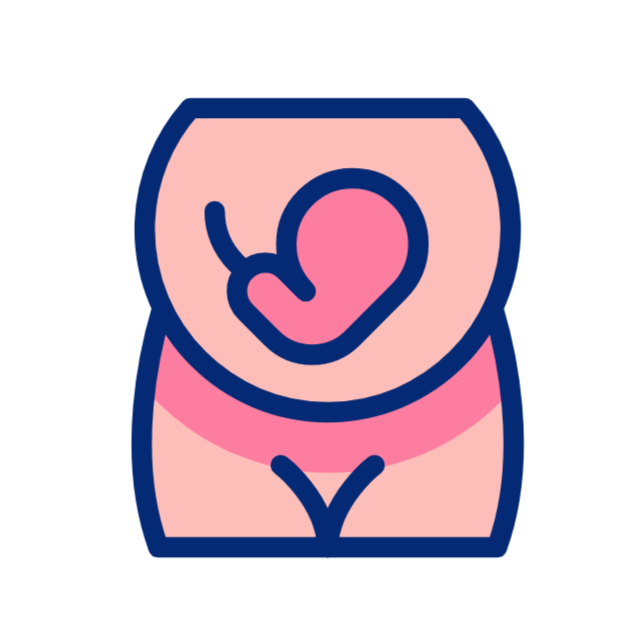
Pregnancy

Smoking & Alochol

Obesity

Junk Foods
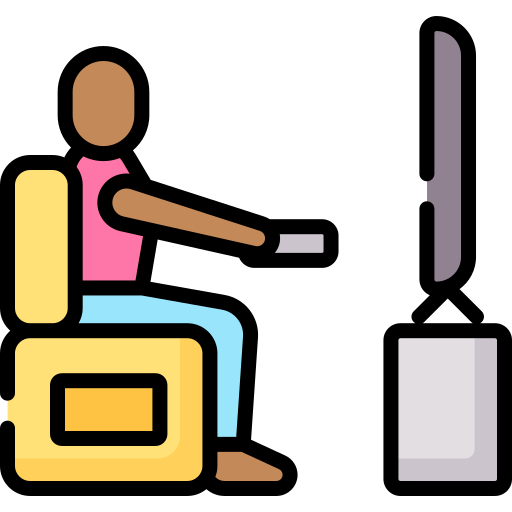
Sedentary Lifestyle
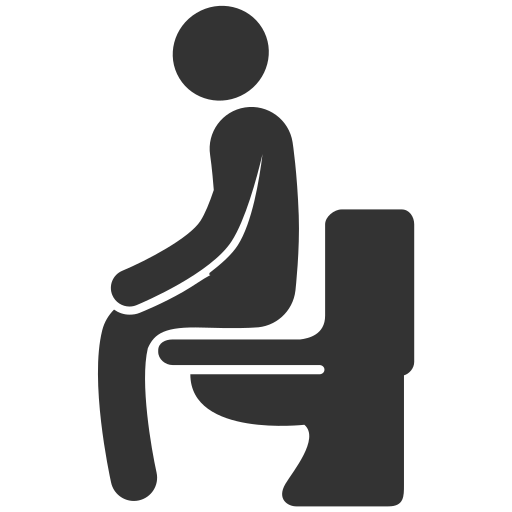
Straining during bowel movements
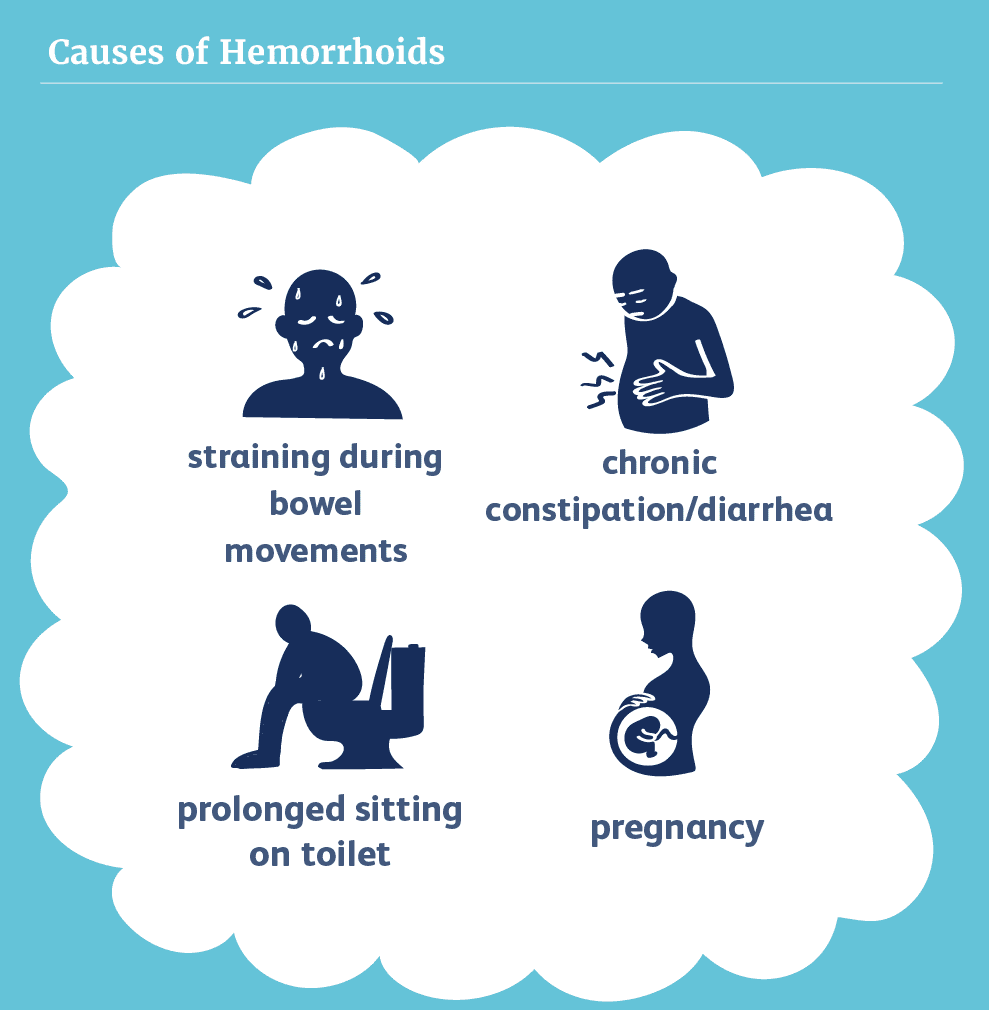

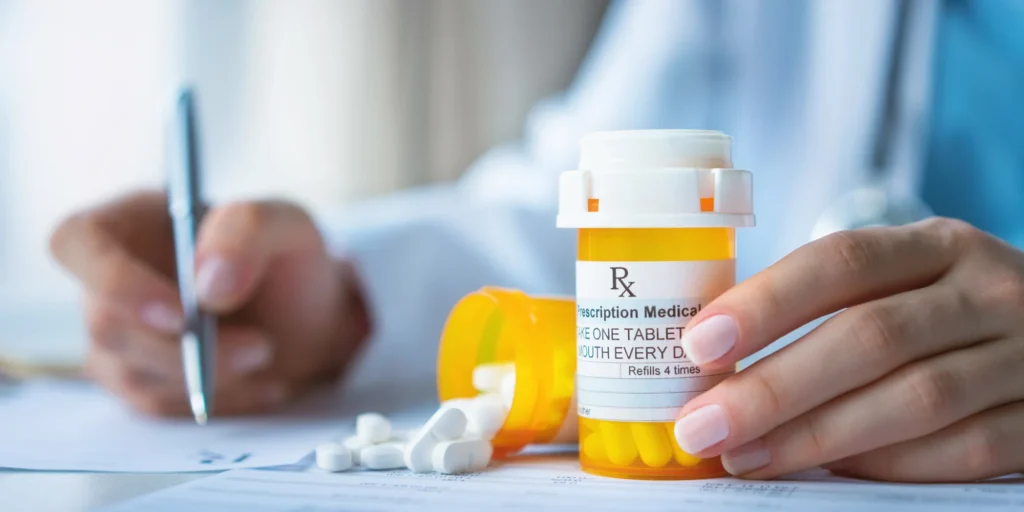
Treatment for Piles
Lifestyle Changes
- Diet: Increase fiber intake (fruits, vegetables, and bran-based cereals) to keep stools soft and regular.
- Weight Management: Losing weight and regular exercise can help reduce piles’ severity.
Medications
- Over-the-Counter (OTC) Options: Painkillers, creams, ointments, and pads can reduce swelling and redness. Limit use to 7 days.
- Laxatives: Prescribed for constipation to ease bowel movements and reduce strain.
Surgical Treatment for Advanced Piles
- Hemorrhoidectomy: Removal of excess tissue causing bleeding.
- Banding: Elastic bands cut off the blood supply, causing the pile to shrink and fall off.
- Stapling: Blocks blood flow to hemorrhoidal tissue, less painful than hemorrhoidectomy.
- Sclerotherapy: Injection to shrink hemorrhoids, suitable for Grade II and III piles.
- Laser (Diode) : Most advanced Treatment without any cut, suture & general anesthesia for hemorrhoids, suitable for Grade II and III piles, fistula, fissure, pilonidal sinus.
Laser Surgery for Piles
- Haemorrhoidal Laser Procedure (HeLP): Targets the superior rectal artery using laser energy to cut off blood flow.
- Laser Haemorrhoidoplasty (LHP): Treats vascular and prolapse components of piles.
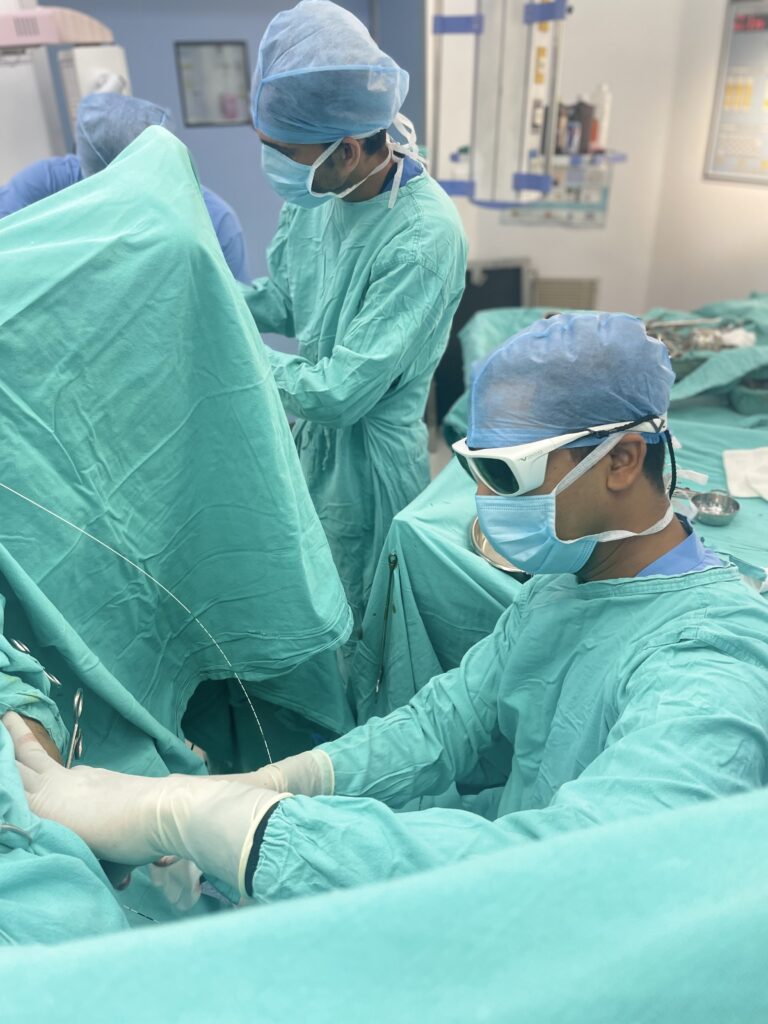
Benefits of Laser Treatment:
- Non-invasive procedure using laser probes
- Local anesthesia for minimal discomfort
- No incision, minimal blood loss
- Minimal post-operative pain
- Precision-focused on tissues
- Out-patient procedure, same-day return home
- Faster recovery with less healing time
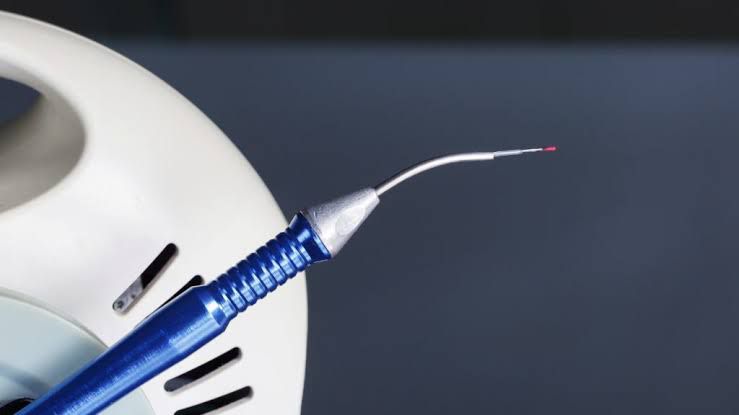
Laser treatment offers precision, efficiency, and improved patient outcomes, making it an excellent choice for advanced piles.
Anal Fistula
What is Anal Fistula?
The anus is the external opening through which waste exits the body. Inside the anus are small glands that may become blocked, leading to the formation of an infected cavity, known as an anal abscess. While some abscesses drain spontaneously, others require surgical drainage. Approximately 50% of anal abscesses develop into a fistula, where a small tunnel forms, connecting the infected gland to an opening on the skin near the anus.
Symptoms
- Recurring anal abscesses
- Pain and swelling near the anus
- Pain and swelling near the anus
- Discomfort or pain during bowel movements
- Bleeding
- Bloody or foul-smelling pus draining from an opening around the anus
- Skin irritation around the anus due to constant drainage
- Fever, chills, or general fatigue
Causes
- Anal Trauma
- Tuberculosis (TB)
- Rectal cancer
- Diverticulitis
- Sexually transmitted diseases
- IBD & Crohn’s disease
What is an Anal Fissure?
An anal fissure is a small tear or cut in the lining of the anus, the opening through which stool passes out of the body. This tear may extend into the anal canal and is a common condition affecting people of all ages, from infants to the elderly. Anal fissures account for 6% to 15% of visits to colorectal surgeons and affect men and women equally. They often cause severe pain during bowel movements and are the most frequent cause of rectal bleeding in infants.
Key Facts About Anal Fissures:
- Damage to the anal lining is a common cause.
- Some cases are idiopathic, meaning they have no identifiable cause
- Around 10% of people experience anal fissures at some point in their lives
- Staying hydrated may reduce the risk of developing anal fissures
Symptoms of Anal Fissures
- Pain
- Burning
- Itching
- Anemia
- Bleeding
- Swelling
Preventing Hemorrhoids
Here are a few tips to help get relief or prevent hemorrhoids:
If you are not getting any relief or if the condition worsens, speak with your doctor.

Eat a well-balanced diet with plenty of fiber and drink lots of water to avoid constipation… also get as much exercise as possible When having a bowel movement, don’t strain… and try not to wait when you have the urge to go the bathroom. After every bowel movement, thoroughly clean the affected area.
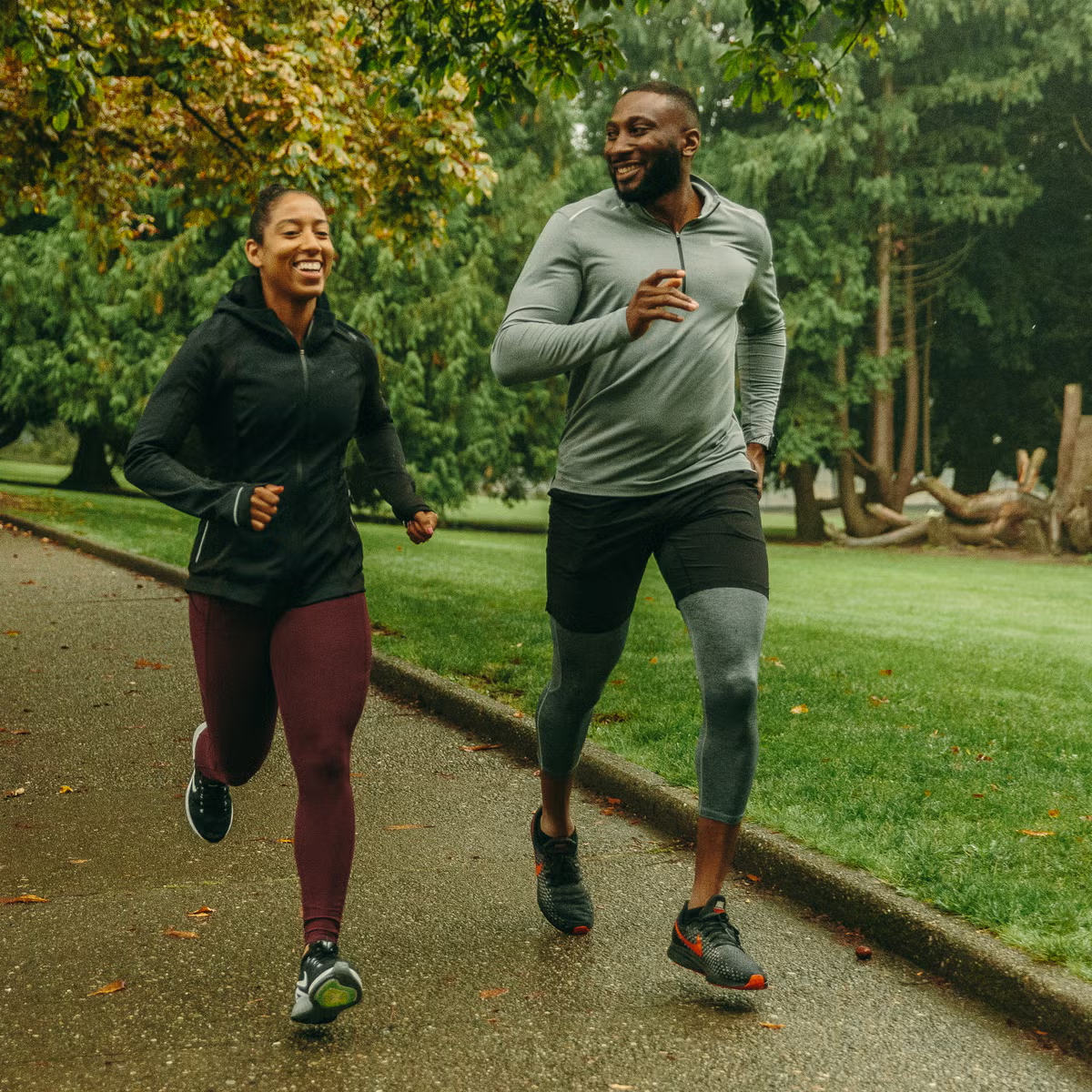
Avoid sitting or standing for long periods of time to take the pressure off the rectal area and increase blood return from the lower half of your body… if possible, get up and move around every hour.
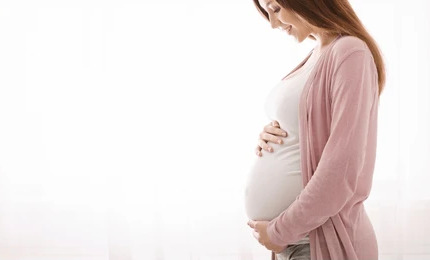
For women doing daily Kegel exercises can help. Kegels increase circulation in the rectal area and strengthen the muscles around the anus, decreasing the chance of hemorrhoids.
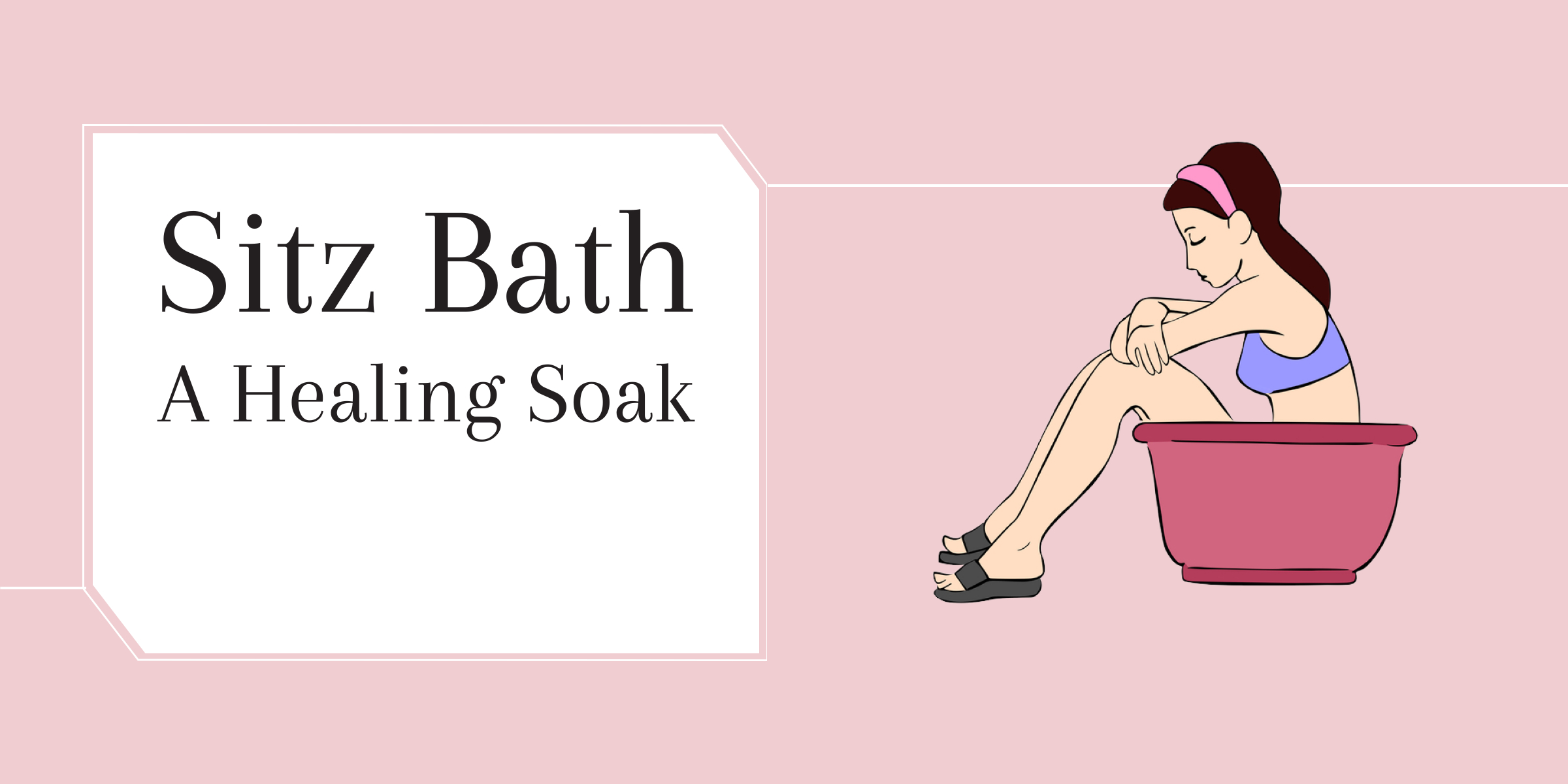
If a problem develops, other than using a medicated pad like Tucks, you can also try applying ice packs to the swollen area, or soak in a warm tub of water or a sitz bath for several minutes… after every bowel movement, thoroughly clean the affected area with soft, unscented toilet tissue.
Surgery vs Laser for Piles
Surgical (Surgery) | Non Surgical (Laser) |
Cutting of Pile Mass | No Cutting |
Through Surgical Blade | Ligation of pile mass via Doppler Guide Machine. |
Heavy blood loss | No blood loss |
Hospital stay for one week | Walk out the same day |
Daily dressing for two weeks | No need for dressing |
Recovery take more time | Recovery on the same day |
Recurrence chances high | No Recurrence |
Bed rest for one month (Most Cases) | Quick 30-minute treatment with minimal downtime. |
Book An Appointment
What Patients Say
Varicose vein Laser
Varicose vein Laser
Varicose vein Laser
Frequently Asked Question
Haemorrhoids, commonly known as piles, are enlarged veins found in or around the anus. They develop when these blood vessels become swollen, similar to how varicose veins form in the legs.
Haemorrhoids are caused when the blood vessels in and around the anus become stretched due to increased pressure. Common factors include straining during bowel movements, chronic coughing, heavy lifting, pregnancy, being overweight, and childbirth. These conditions raise pressure in the abdomen, which subsequently puts pressure on the veins around the anus, leading to haemorrhoids.
Yes, diet can significantly improve haemorrhoid symptoms. Since straining during bowel movements is a major cause of haemorrhoids, avoiding constipation is crucial. Eating a healthy diet rich in fresh fruits, vegetables, and fiber, along with drinking plenty of water, can help prevent constipation. Staying active and managing stress also support proper bowel function, which can reduce the risk of straining and alleviate symptoms of haemorrhoids.
To ease the pain of haemorrhoids, you can use ice packs to reduce swelling. Sitting in a warm bath filled with plain water for 10 minutes several times a day can also provide relief. Avoid being overly hygienic when washing, as it can cause more irritation. Additionally, try not to sit for long periods of time, as this may worsen the symptoms.
If haemorrhoids persist despite home treatments, surgical intervention may be necessary. Your doctor may recommend options such as laser heat treatment, chemical solution injections (sclerotherapy), rubber band ligation, or surgical removal of the haemorrhoids. The choice of procedure depends on whether the haemorrhoids are internal or external.
To prevent haemorrhoids from recurring, ensure your diet is rich in fiber, drink plenty of fluids, and increase your physical activity. These habits help prevent constipation, a major cause of haemorrhoids. For personalized advice on avoiding future problems, consult with our specialist.
